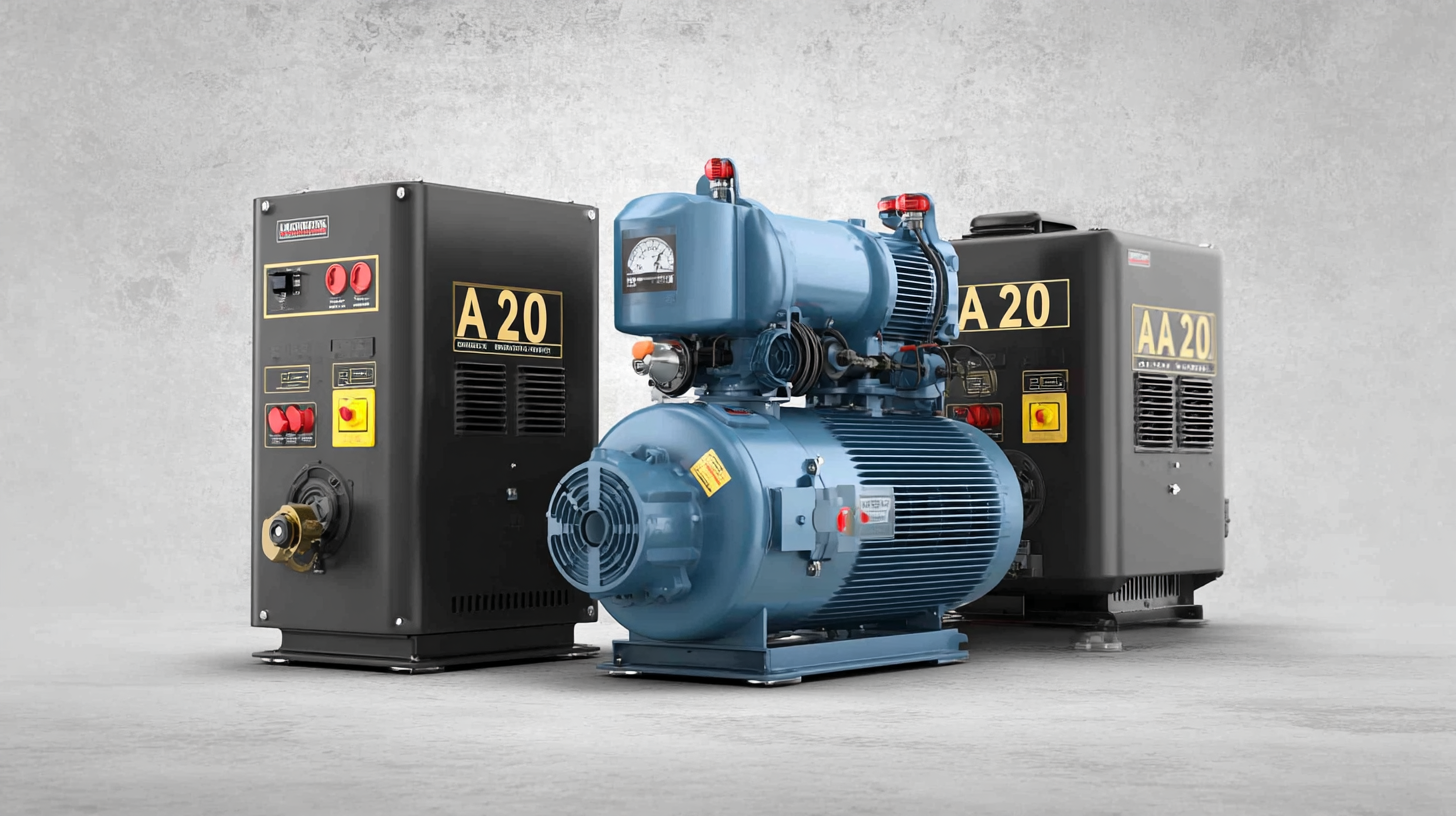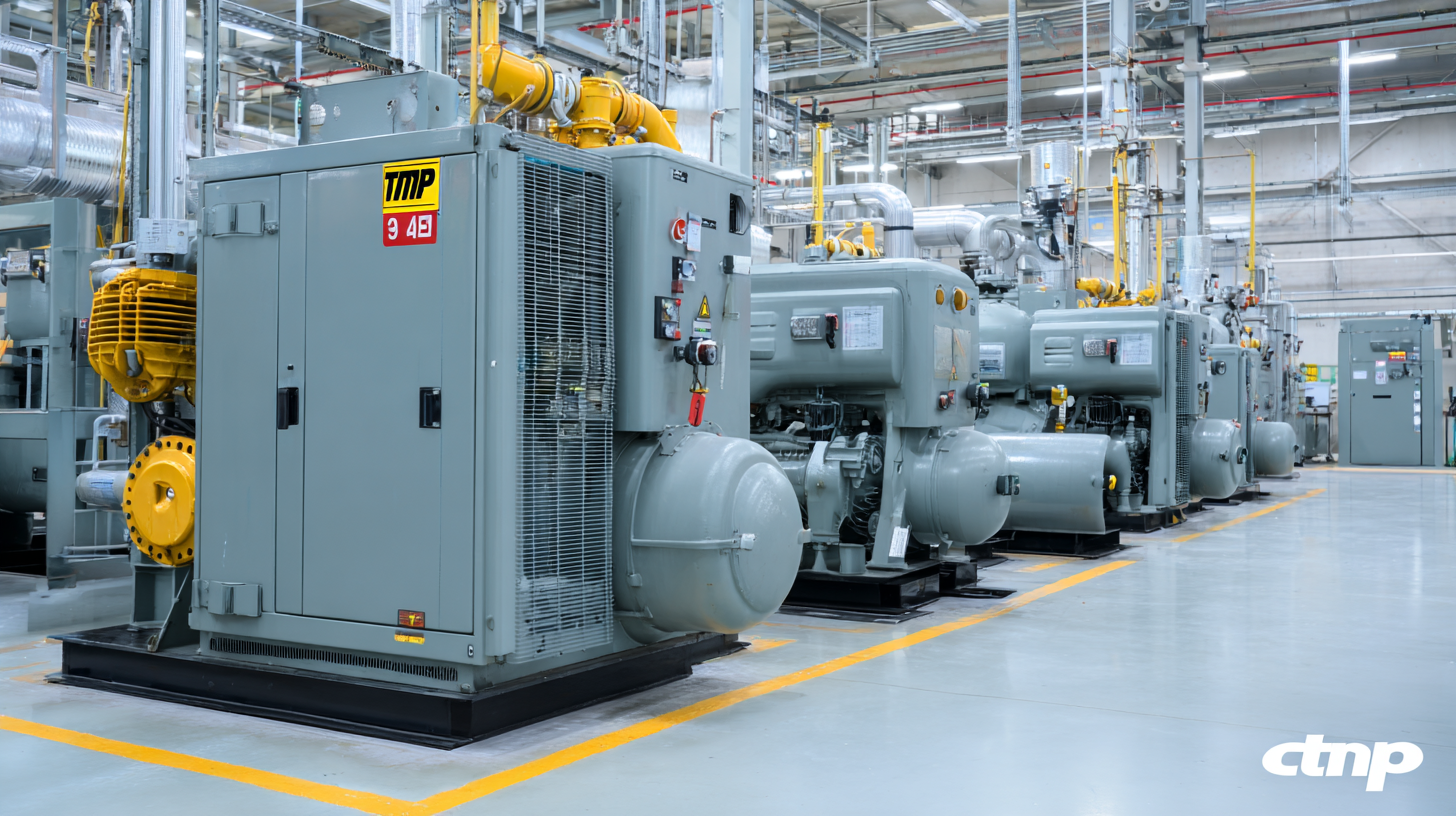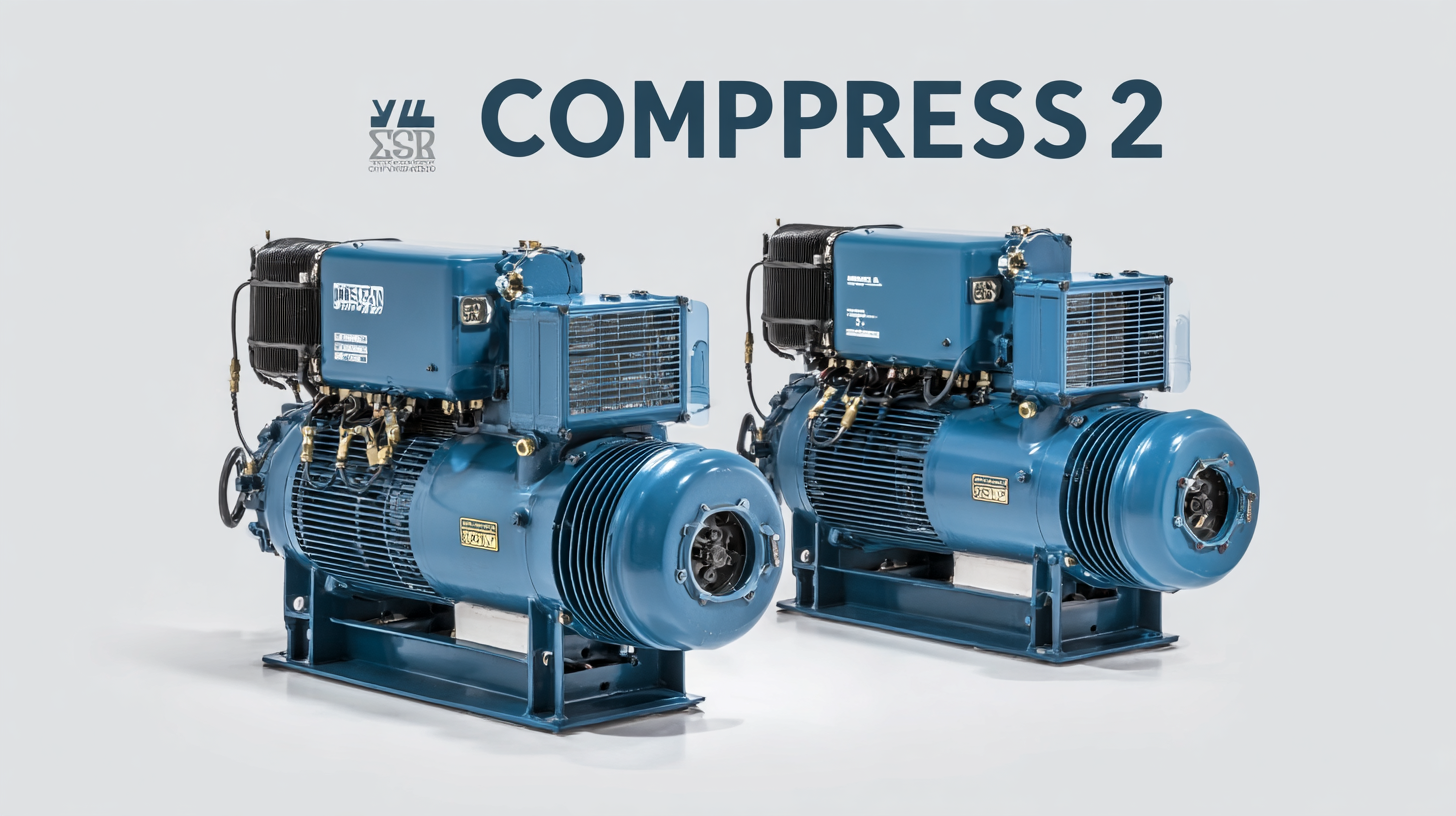7 Expert Tips for Choosing the Best Industrial Air Compressors Based on 2023 Market Trends
As industries continue to evolve in 2023, the demand for industrial air compressors has reached unprecedented levels, driven by advancements in automation and a push for energy efficiency. According to a recent report by Research and Markets, the global air compressor market is projected to grow from $30 billion in 2022 to over $38 billion by 2028, reflecting a CAGR of 4.5%. This growth is fueled by the rising need for compressed air in manufacturing, construction, and various other sectors that require reliable equipment to optimize operations. In light of these trends, selecting the right industrial air compressor has become critical for businesses aiming to enhance productivity and reduce operational costs. This blog aims to provide expert insights that will guide you in choosing the best industrial air compressors to meet your specific needs, ensuring that you stay ahead in a rapidly changing market.

Key Technical Specifications for Selecting Industrial Air Compressors
When selecting industrial air compressors, understanding key technical specifications is essential to make an informed decision that aligns with market trends. Given the projected growth of the global air compressor market from $18.96 billion in 2025 to $29.31 billion by 2032, with a compound annual growth rate (CAGR) of 6.4%, the demand for efficient and reliable compressors is on the rise.
A vital specification to consider is the pressure rating, measured in psi (pounds per square inch), which determines the maximum pressure the compressor can generate. Different applications, from manufacturing to pneumatic tools, require varying pressure levels. Additionally, the type of compressor plays a significant role; rotary screw compressors are favored for continuous use, while reciprocating compressors are suitable for intermittent applications.
Another critical factor is the compressor's flow rate, indicated in cubic feet per minute (CFM). This measurement reflects the volume of air delivered and must align with the demands of the tools and machinery it supports. Finally, energy efficiency ratings can significantly impact operational costs, making it crucial to identify models designed to minimize energy consumption while maintaining performance. As the market evolves, staying informed on these technical specifications will empower businesses to choose the most suitable industrial air compressor for their needs.
Understanding Market Trends Influencing Air Compressor Choices in 2023
In 2023, several market trends are shaping the decision-making process for selecting industrial air compressors. One key trend is the increasing demand for energy-efficient technologies, driven by rising operational costs and a push for sustainability. Manufacturers are focusing on providing solutions that not only meet performance standards but also reduce energy consumption, thereby appealing to environmentally conscious businesses. This shift is especially relevant in regions grappling with energy crises, prompting industries to adopt cleaner alternatives such as heat pumps and advanced compression technologies.
Another significant influence is the rapid growth of sectors such as healthcare and transportation, which relies heavily on reliable air compressor systems. Medical facilities continue to require high-purity oxygen concentrators, thus sparking interest in compressors that can efficiently meet these needs. Meanwhile, the emergence of hydrogen fuel cell vehicles has created a demand for specialized compressors capable of supporting hydrogen station infrastructures. These developments indicate a robust future for the air compressor industry, as it adapts to the evolving needs of various sectors while leveraging technological innovations to stay competitive in a dynamic market landscape.

Essential Considerations in Compressor Size and Capacity for Your Needs
When selecting an industrial air compressor, understanding the size and capacity requirements specific to your operations is crucial. Current market trends indicate that the global reciprocating air compressor market was valued at approximately $5.26 billion in 2022, with projections showing a compound annual growth rate (CAGR) of 4.1% through 2030. This growth underscores the increasing demand for compressors suited to varied industrial needs, including efficient raw material delivery for applications such as snow guns in mountainous regions.

Considerations in compressor size should reflect the unique demands of your processes. For instance, energy-efficient options are becoming increasingly popular, driven by their ability to reduce operational costs while maintaining performance. The commercial RAC PD compressor market is expected to reach $8.7 billion by 2035, with a CAGR of 4.2%, further emphasizing the necessity for thoughtful purchasing decisions focused on capacity and efficiency.
Determining the right specifications tailored to your particular application can significantly enhance productivity and decrease downtime, making this an essential aspect of compressor selection.
Comparing Different Types of Air Compressors: Pros and Cons
When selecting an industrial air compressor, understanding the different types available in the market is crucial. The most common types include reciprocating, rotary screw, and centrifugal air compressors, each with distinct advantages and disadvantages. Reciprocating compressors are known for their high efficiency and ability to produce high pressure, making them ideal for heavy-duty applications. However, they can require more maintenance due to their moving parts. On the other hand, rotary screw compressors are popular for their continuous airflow and low operational noise, making them suitable for prolonged use. Yet, they often come at a higher initial investment.
Tip: Consider your specific application needs before making a decision. Evaluate factors such as air quality, pressure requirements, and duty cycle to determine which compressor type aligns with your operational demands. Additionally, centrifugal compressors are great for large-scale operations due to their high efficiency and ability to handle large volumes of air, but they might not be the best choice for smaller tasks due to their high cost and complexity. Balancing these pros and cons will ensure you choose the best compressor for your industrial requirements.
7 Expert Tips for Choosing the Best Industrial Air Compressors Based on 2023 Market Trends - Comparing Different Types of Air Compressors: Pros and Cons
| Type | Pros | Cons | Ideal Use Cases |
|---|---|---|---|
| Reciprocating Air Compressors | High efficiency for small spaces | Noisy operation | Automotive repair shops, construction sites |
| Rotary Screw Compressors | Continuous operation, quieter | Higher initial investment | Manufacturing, larger industrial applications |
| Centrifugal Compressors | High volume output | Less efficient at low demand | Power generation, large-scale applications |
| Portable Air Compressors | Highly mobile, easy to transport | Limited power and capacity | Outdoor work, small tasks |
| Oil-Free Compressors | Cleaner air output, less maintenance | Lower durability compared to oil-lubricated | Medical facilities, food industry |
Tips for Evaluating Energy Efficiency and Operational Costs of Compressors
When selecting the best industrial air compressors in light of 2023 market trends, evaluating energy efficiency and operational costs is crucial. Energy-efficient compressors can significantly reduce long-term costs by minimizing power consumption, which is particularly important in large-scale manufacturing operations. Look for models that offer variable speed drives or advanced control systems that adjust energy usage based on demand. This not only optimizes performance but also contributes to lower greenhouse gas emissions, aligning with sustainability goals.
In addition to energy efficiency, operational costs encompass maintenance, repair, and parts replacement. Compressors that require less frequent maintenance tend to be more cost-effective in the long run. It's essential to consider the type of compressor—rotary, centrifugal, or reciprocating—as these factors influence both efficiency and overall economic viability. Furthermore, assess whether a lubricated or oil-free design better meets your operational needs; while oil-free models may have a higher upfront cost, they can result in savings on maintenance and increased reliability in sensitive applications. Prioritizing these aspects can help businesses make informed decisions and enhance their return on investment.


